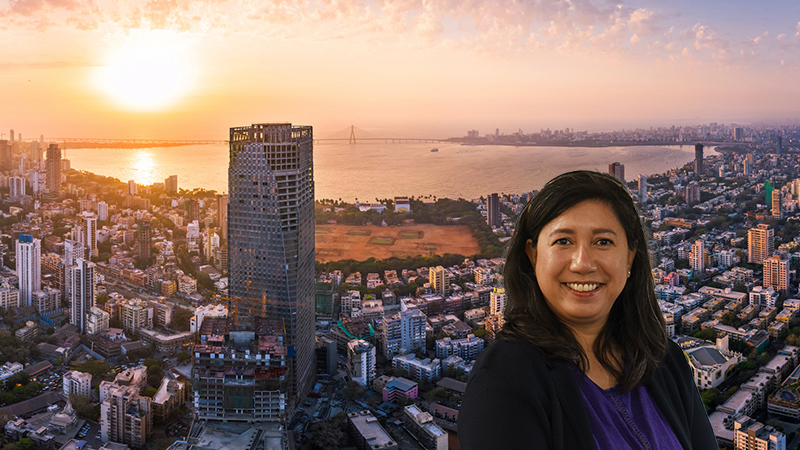As of the end of January 2023, the Investment Association’s Global Emerging Markets sector holds 165 equity funds from 94 providers. These are funds that invest 80% or more of their assets in equities from emerging market countries, as defined by the FTSE or MSCI Emerging Markets and Frontier indices. Up to 20% of a fund’s total can be invested in frontier equites.
This space includes funds with a large-cap, all-cap and small-cap emphasis, passive strategies, ETFs and those with growth or value styles. From a pure style perspective, as growth stocks have largely outperformed value since the global financial crisis, there are typically more growth-oriented strategies than value funds today as the popularity of the former has grown over the years.
We have also seen a small but growing number of responsible funds emerge in recent years. Some take a passive or active approach and include, for instance, a range of exclusions such as tobacco and gambling and/or sole focus on companies providing solutions to environmental or social issues.
The use of ESG factors in a fund’s investment process is of rising interest for a range of investors. It is often used to great advantage to both enhance returns and, perhaps even more importantly, to understand and manage risk. How ESG is assessed within a portfolio is therefore an important component of understanding a manager’s strategy, as is gaining an understanding of their investment philosophy and style of management.
Given the diverse range of funds with different objectives, we do not believe looking at a fund’s performance relative to the sector average is useful. Managers investing in the region follow such a wide range of styles and approaches, and so it is important to consider this along with their objectives, what process they use to sift through the vast universe to find their companies, their attitude to risk together with the risk budget they have and the resources/support they can access.
For investors who prefer a passive strategy for its low-cost characteristics, the suitability of the index being tracked should be assessed. In this regard, it is important to consider the management group’s commitment to operating passive strategies, the size of the fund and its historical record of tracking the index.
Also, bear in mind there are other risks associated with a passive strategy, such as the concentration risk that exists in an index, which a tracker fund aims to replicate as closely as possible.
Macro backdrop
The emerging markets region is home to a range of different economies, from the more mature – South Korea – to the more emerging – Brazil, South Africa, Vietnam, to name a few. For long-term investors, the region is a smorgasbord of opportunities. It is a large and liquid stock-listed universe, which, according to a popular index provider, is home to around 24 countries making up more than $30trn (£24.9trn) in total market cap and about 20% of the world’s free-float market cap.
Moreover, the GDP of the region is about 60% of the global GDP and growing at a rate that surpasses that of the developed markets space. There are thousands of companies of varying qualities listed on various stock exchanges. India alone has roughly 7,000 listed stocks on the National Stock Exchange and the Bombay Stock Exchange. Each country also has its own population and development dynamics, culture and history, and its attendant social and environmental challenges.
As these markets can be driven by ‘macro’ factors, this presents opportunities for long-term investors as often in such times there is little regard for a company’s business fundamentals and both high-quality businesses and poor ones can experience significant selling pressure/de-ratings.
In general, asset allocators have underweighted the region during the past few years, with flows out of funds invested in the IA Gem equity space last year amounting to £1bn in net retail sales. In other words, sentiment has been quite poor towards the region, but again this presents an opportunity for investors.
Industry experts highlight the current discount differentials in valuations between emerging and developed markets, with emerging markets also on a discount versus its long-term price/earnings average.
Measuring performance
The past 12 months have been challenging for investors in the region and most markets were very macro driven as various factors impacted investor sentiment. These included higher interest rate expectations, inflationary pressures, recessionary risks, geopolitical risks driven by Russia’s invasion of Ukraine and surging global commodity and energy prices which have upped the cost of living globally.
All this came on top of ongoing supply chain issues and component shortages affecting certain industries, Chinese property market woes and the country’s continued lockdowns.
Few markets and sectors ended the year up in absolute terms. There were some exceptions, including the commodity rich economies in Latin America and Saudi Arabia. Brazil was one of the strongest-performing markets last year, up almost 29% in sterling terms, while China was down 14%. Korea and Taiwan were both down, by a respective 20% and 21%.
Russia was a key detractor for investors holding exposure to that market when it invaded Ukraine in February 2022. Sanctions against Russian assets continued over the course of the year and many asset managers had to write down their exposures to zero as these assets became untradable.
From a sector perspective, few were up in absolute terms last year, though there were some exceptions, such as utilities and financials. In December, China ended abruptly its zero-Covid policy and this helped turn investor expectations of a recovery in the Chinese economy. As a result, towards the end of the year there was a sharp rally in Chinese equity markets.
FUNDS TO WATCH: 3-YEAR PERFORMANCE
1. Managers of the Aberdeen Standard Sicav Emerging Markets Smaller Companies strategy seek to grow capital and produce income through investing in small-cap companies. The strategy is run by a team of managers who follow a bottom-up approach, selecting companies that have strong quality and growth characteristics to invest in for the long term.
2. Aubrey Global Emerging Markets Opportunities aims to grow capital through investing in areas that are consumer focused as the managers believe opportunities within emerging markets come from rising wealth and growth in consumption. Therefore, they are seeking to invest in firms that benefit from the growth in consumer wealth, and at present they see most of this rising wealth coming from Asia and specifically from China and India. They are willing to hold sizeable allocations to such opportunities, as indeed they have done in China and India in recent years, and so we see this strategy as very much focusing on this secular consumption growth theme that other investors also target across the region, but in a punchier manner.
3. The team behind Invesco Global Emerging Markets believe investors’ behavioural biases often give rise to market inefficiencies, for instance, when market participants overreact to short-term news or when they respond to momentum indicators. Sector and stock fundamentals will vary over the course of the economic cycle and there are a number of reasons for stocks and sectors to be trading at discounts to their fair value. The team seeks to take advantage of these opportunities by applying a flexible approach, which focuses on careful fundamental analysis with a strong emphasis on valuation levels. They are essentially seeking to buy companies that are trading at significant discounts to their estimates of fair value and are willing to wait for them to reach their intrinsic worth before selling.
FUNDS TO WATCH: NEWCOMERS
1. TM Redwheel Global Emerging Markets launched in 2021. Manager John Malloy and his well-resourced team seek to identify companies that exhibit strong growth characteristics they believe are not yet reflected in the share price. The fund’s original process was established more than 20 years ago at Everest Capital and the team can draw on their experience of markets and trends over time to guide investment decisions. They are not afraid to stray from the beaten track in order to find attractive opportunities and are adept at investing in companies less broadly followed or not included in the fund’s benchmark.
2. Managers of the JPM Emerging Markets Sustainable Equity Fund seek to identify companies that are sustainable leaders, with good governance, capable management of environmental and social issues, and superior and sustainable growth potential. They will also consider companies they believe are demonstrating improving sustainability characteristics. Certain industries and stocks will be excluded from their universe.
3. Dodge & Cox believes that valuations may not adequately reflect the long-run opportunities within companies. Ultimately, the group recognises it is the long-term growth in earnings and cashflow that drives share prices; but crucially the team strives to avoid paying a high price for this growth. The Dodge and Cox Emerging Markets Stock Fund draws on the resource of a large team of analysts who are expected to fully understand the business they are promoting, appraising each company’s performance drivers and the risks it faces, including factors such as franchise strength, competitiveness, growth potential and management quality.
FUNDS TO WATCH: ASSETS UNDER MANAGEMENT
1. Vanguard is one of the world’s largest managers of passive strategies. The organisation is mutually owned by investors in its US-domiciled funds and the company has a policy to return profits to all its clients through lower charges. The firm offers an extensive range of index funds to its international client base. Vanguard Emerging Markets Stock Index invests in physical securities and the fund positions replicate a majority of the index components and establish representative exposure for more minor elements using an optimisation strategy. An optimisation process is used to manage strategies where illiquidity and high transactions costs make full replication less effective. The goal is to create a portfolio that has risk characteristics similar to that of the benchmark.
2. The team behind the Federated Hermes Global Emerging Markets Equity Fund seeks to identify quality businesses that are attractively valued. The managers believe in buying stocks that are attractively priced relative to the quality of the underlying company. They search across the quality spectrum for companies trading at a significant discount to their fair value. In the main, high-quality firms need to be at attractive valuations relative to peers and their own history, but lower-quality companies have to be extraordinarily cheap to warrant investment. An advantage of this style is that it is not necessarily beholden to a particular type of business and the managers will position the portfolio solely as a function of the opportunities available.
3. Polar Capital Emerging Markets Stars was launched in 2018 under manager Jorry Rask Nøddekaer, who joined the firm that year. A seasoned investor, the manager works closely with co-manager Naomi Waistell, who joined the firm in 2020. The managers are supported by a small team of sector specialists, and they seek to identify attractively priced companies they believe are capable of adding long-term sustainable economic value. These tend to be companies operating in attractive growth areas where they are able to exploit the edge they have to their advantage, using their capital in a manner that the businesses can generate a high return on that capital, which should lead to stakeholder value and therefore shareholder value over time.
Amaya Assan is head of fund origination at Square Mile Investment Consulting and Research
This article first appeared in the March edition of Portfolio Adviser Magazine







